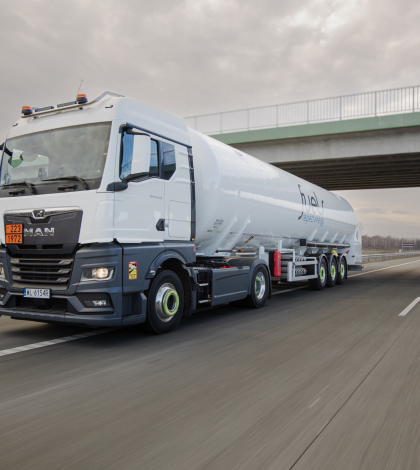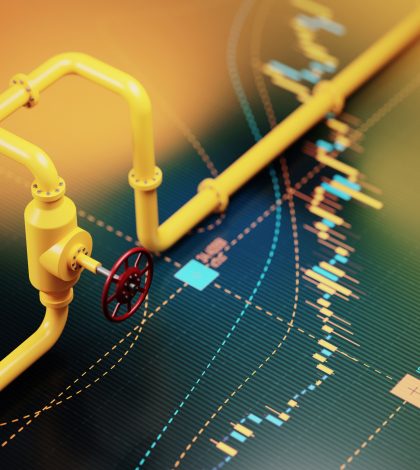How does an LNG installation work?
Due to the dynamic increase in interest of LNG, development and innovation in the field of LNG infrastructures are becoming crucial. Companies active in this industry, trying to meet the growing demand, are investIng in modern technologies and sustainable solutions. There they contribute to the further development of this sector in the global arena.

Investment stages – step by step
Before making the final decision to implement an LNG infrastructure, a key step is to conduct a thorough analysis of the customer’s needs and create a general concept of using liquefied natural gas in a specific location. This includes taking into account area specifics, market requirements and regulations to ensure optimal use of LNG.
After making the decision, the next step is to start activities related to the implementation of the infrastructure. In the initial phase of the investment, all formalities are necessary, including obtaining administrative decisions necessary to obtain a building permit. In this context, the following include obtaining an environmental decision, determining development conditions in the absence of a Local Development Plan, and a key element – the construction design.
After obtaining and validating the decision on the building permit, the construction stage begins, including all construction and assembly works. This process usually ends with the stage of certification, acceptance, obtaining the necessary permits and approvals, and the whole thing ends with an occupancy permit.
It is worth noting that individual stages of the process can run in parallel, which speeds up the entire process of implementing the LNG infrastructure. The total time to obtain all required consents and permits, under favorable conditions, is usually approximately 10 months, assuming the presence of a Local Development Plan and no need to apply special procedures related to a plant with an increased risk of a serious accident.
Emphasizing the essence of the Local Development Plan and paying attention to the simultaneous course of construction processes and formal aspects are the key to the effective implementation of the LNG infrastructure.
The construction of an LNG station consists of the following stages
- Formal and legal
a. Site visit and design
b. Development plan or application for development conditionsc. Environmental decision for LNG tanks with a capacity => 10 m3
d. Building permit - Executive – construction of an LNG station
- Certification (min. Office of Technical Inspection, etc.)
- Construction closures – obtaining an occupancy permit
Investment process – how long does it take?
The investment process is influenced by many variables. In the case of favorable location conditions and favorable administrative and legal aspects, there is a potential to complete an investment in liquefied natural gas (LNG) in just 10 months.
However, due to the lengthy administrative proceedings, the process of building the LNG infrastructure itself covers a period of 12 to 15 months from the moment of signing the Agreement with the Customer. It is worth emphasizing that this is a much shorter time compared to the alternative solution, which is connection to the gas network, where the procedures may take up to several years. Such a process, especially without professional support, can be a big challenge.
In a situation where there is no access to the gas network in a given location, considering the use of LNG becomes an attractive option. It is worth noting that the construction time of a new gas network may range from 40 to 50 months, which further confirms the competitiveness of the LNG investment process.
The final duration of the investment process also depends on the type of contract signed and the resulting responsibilities for individual works. The key element is to determine which tasks are the responsibility of the client and which are covered by the contract. If the client has the opportunity to carry out certain works on their own and both parties agree that it will speed up the process, this option is possible. However, each case is unique and it is impossible to clearly determine which path will be more effective. That is why it is so important to divide tasks rationally and minimize the risk of delays. Additionally, performing some work yourself may shorten the entire investment process.
How to avoid delays?
To avoid delays in the investment process, it is crucial to take several important steps. First of all, you should choose an experienced Partner whose expertise will help you effectively deal with any, even the most demanding, situation.
Timely actions in accordance with the established schedule, proactive approach to activities and initiative in solving customer problems are the key elements that influence the efficient implementation of the project.
When choosing a Partner, it is worth paying attention to his/her previous experience and references related to similar projects. A company with a solid investment portfolio, able to respond flexibly to possible difficulties, can significantly reduce the risk of delays.
Communication also plays a vital role in avoiding delays. Clear and open exchange of information between all parties involved in the project allows for ongoing problem solving, identification of possible challenges and effective decision-making.
Meticulous monitoring of work progress along with regular reports and meetings can additionally prevent possible conflicts and difficulties. This allows you to quickly respond to any changes in the schedule and allows you to adjust your strategy to maintain deadlines.
What are the costs of LNG infrastructure? Check!
Switching to a different fuel in the production process in a given company is associated with complex logistics and also requires significant financial outlays.
The costs of investing in an LNG infrastructure and its servicing are determined by various elements. The first is the scale of the infrastructure itself, including: capacity of LNG tanks, scope of regasification systems, transport infrastructure and possible modernization of existing production processes.
An additional factor influencing costs are the technologies used in the LNG infrastructure. Innovative solutions may involve higher costs, but often bring long-term benefits in terms of efficiency and sustainable fuel use.
Moreover, the location of the company plays a key role in the final investment costs. The availability of infrastructure, LNG supplies, as well as related logistics may affect the overall project budget.
The costs of servicing an LNG infrastructure also depend on various factors, such as the complexity of the technology, the availability of specialized maintenance services, as well as any warranty agreements concluded with the supplier or contractor of the infrastructure.
The size of the enterprise and the subject of the project
The key factor influencing the investment, and therefore the final cost, is undoubtedly the scale of the project. In short, the larger the enterprise and the greater its energy demand, the larger the LNG infrastructure and, therefore, the higher the costs. The scale of the project is an essential criterion determining the investment costs.
Please remember that the most important cost component is equipment, especially cryogenic, double-jacketed and insulated tanks. Their prices are expressed in hundreds of thousands of zlotys per piece. The larger the capacity of the tanks and the more technologically advanced the devices used, the higher the investment costs.
The scale of the project is also important for operating costs, including servicing of the LNG infrastructure. Large infrastructures require more extensive maintenance systems, as well as specialized staff for operation and maintenance.
Therefore, before commencing a project, a detailed analysis of the scale and scope of the planned infrastructure is crucial. A professional approach to the assessment of energy needs, efficiency and effectiveness of technologies and the selection of devices allows for a realistic assessment of investment costs and optimal adaptation of the project to the individual requirements of the company.
Conditions for running the project
The location of the LNG infrastructure implementation and the related environmental and logistic conditions play a key role in shaping the project costs. The ratio of the costs of earthworks and construction works to the LNG infrastructure itself is variable and depends on the amount of LNG stored. In typical cases, this work accounts for about one fifth of the total cost of an LNG infrastructure.
Additionally, an important aspect affecting costs is the possibility of using used equipment to build the infrastructure. Gaselle and partners have both new and used equipment that meets customer expectations in terms of performance and durability. The lack of significant technical obstacles after renovation and adaptation of the devices to a specific project allows their reuse.
Financing models
There are various flexible forms of financing investments in gas infrastructures available on the market, and one of the most popular options is infrastructure leasing. This solution is applicable both when the infrastructures serve only one plant and when settlements are made in accordance with the tariff. Additionally, leasing the infrastructure may also be an attractive option when the infrastructure is built to power a larger area, for example an entire commune.
The main advantage of choosing the leasing model is that the customer does not bear the costs associated with the construction of the infrastructure itself. Under this form of financing, fees are charged only based on the gas used, which allows enterprises and local communities to avoid the costs associated with the initial investment.
The leasing model works well both in the case of individual plants, where the infrastructure supplies only one facility, and in situations where the infrastructure is intended to service a wider area, such as an entire commune. This flexibility allows companies to adapt the form of financing to their individual needs and the specific nature of their business.
It is worth emphasizing that leasing a gas infrastructure brings benefits not only in terms of saving initial investment costs, but also eliminates the risk associated with maintaining and servicing the infrastructure, which rests with the infrastructure supplier. This solution allows customers to focus on the efficient use of gas without having to engage in complex construction and maintenance processes.
Servicing costs
The costs of servicing an LNG infrastructure depend on the complexity of the infrastructure itself, which usually includes at least one cryogenic tank, a pressure restoration evaporator, at least two product evaporators and a gas station with automation. The increase in the complexity of individual components of the infrastructure translates into an increase in the costs of service packages.
However, servicing costs can be divided into fixed costs associated with routine maintenance activities and variable costs for repairs and renovations. Fixed costs include station inspection, electrical measurements, periodic inspections, device settings and regulations, metrology service, as well as automation and telemetry support.
It is worth noting that the age of the LNG infrastructure affects the variability of service costs. At the beginning of operation, costs are usually low due to the warranties provided for individual devices. However, over time, service costs may increase, especially after the warranty expires, due to natural wear and tear of the devices.
Regardless of care and failure prevention systems, service costs can be expected to increase as the infrastructure ages, but maintaining systematic maintenance can minimize the risk of unforeseen failures.
Service costs are often included in the gas fee, which means that the customer does not incur additional financial outlays for the service, regardless of the nature and extent of the maintenance or repair work that may be required.


